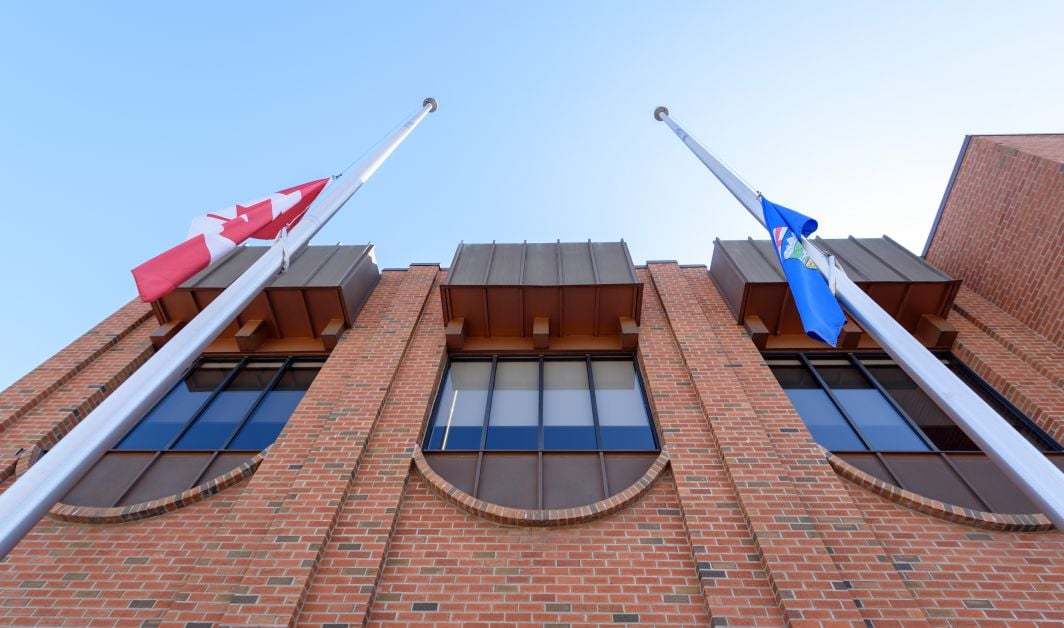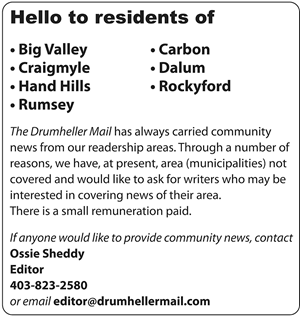
Since the first reported case of COVID-19 was identified in Alberta on March 5, 2020 the ongoing pandemic has continued to evolve, and on Thursday, March 11 flags throughout much of the province, including the Town of Drumheller, were lowered to half-staff for the COVID-19 National Day of Observance.
There have been more than 138,000 confirmed cases in Alberta, with the majority of cases concentrated within the Calgary and Edmonton health zones, and more than 1,900 Albertans have died as a direct result of the virus; the Central Health Zone, which includes the Town of Drumheller, has had more than 10,000 confirmed cases since the pandemic began.
“In the one year since the first case (of COVID-19), things have not gone as well as many would have hoped,” said Dr. Rithesh Ram, owner and practicing family physician at Riverside Medical Clinic; Dr. Ram is also an epidemiologist, which is a specialized field of medicine focused on studying disease outbreaks and epidemics.
Dr. Ram notes one major cause for concern with COVID-19 are the four new variant strains of the virus which have been identified globally; two of these strains, the B.1.1.7 and B.1.351 variants first identified in the United Kingdom (UK) and South Africa respectively, have been discovered in Alberta.
“From what we know now, (the variant strains) can transmit at a greater rate than the original strain,” Dr. Ram says. “If this continues to be true, that is very concerning, especially since we don’t know for sure yet if the available vaccinations will protect us from these variants.”
The first variant case was reported within the province in mid-December 2020, and the case numbers have grown exponentially since then; as of Monday, March 15 there were a total of 902 variant cases in Alberta, 173 of which are within the Central Health Zone. Further geographic breakdown of these cases is unavailable.
Around the same time as the variant strains were first identified, the province began rolling out the COVID-19 vaccine. Distribution has faced delays due to supply shortages at a federal level of the Moderna and Pfizer vaccines, which were approved by Health Canada in December 2020.
As of Monday, March 15, Alberta has administered a total of 357,983 doses and more than 91,000 eligible Albertans-including healthcare workers and seniors over 75-are fully immunized with two doses.
Health Canada recently approved two new vaccines from Astra-Zeneca and Janssen in late-February and early-March respectively. With the addition of these two new vaccines, the government is anticipating distribution to the general public will begin by early summer 2021.
Despite the availability of vaccines, enhanced public health measures continue to remain in effect.
Enhanced measures were initially put in place early in the pandemic and the Town of Drumheller declared a State of Local Emergency (SOLE) to help limit the spread locally. Over the summer these measures were eased, and the SOLE was retracted.
However, as new daily cases, hospitalizations, and ICU admissions climbed, Alberta Premier Jason Kenney announced stronger measures in December 2020 which prohibited Albertans from gathering with loved ones over the holidays; locally, a second SOLE was enacted on November 23, 2020 following a spike in local cases.
Cases and admission rates have declined since their height in December and January, and restrictions are being eased once more.
Most recently, the province entered Step 2 of a phased reopening, on Monday, March 8.
And, while many are breathing a sigh of relief at easing restrictions, Dr. Ram notes there are some eerie parallels between the current events and those from more than a century ago during the 1918 Spanish flu pandemic which heavily impacted the Drumheller Valley.
Of Drumheller’s approximate 2,000 residents at the time, it is estimated some 200 people-or 10 per cent of the valley’s population-died as a result of the Spanish flu.
Similarly to COVID-19, public health measures were also put in place to protect against the Spanish flu, including social distancing and instructions on how to make homemade masks.
Protests rallying against these orders were held, and these public health measures were subsequently eased “too soon, and for too long,” according to Dr. Ram.
“Some historians believe one reason the second wave (of the Spanish flu) was deadlier than the first is that public health measures that were put into place for the first wave were relaxed or ignored,” he says.
One major difference between the Spanish flu and COVID-19 is an advancement in technology which has allowed more readily available access to information. While this has allowed the general public to be well informed on the evolving pandemic, it has also allowed misinformation and conspiracy theories to also spread easily, and unchecked.
“If those in charge avoid answering questions honestly, the public will find or create their own truths, and this ultimately harms everyone,” Dr. Ram said.
He adds, “While there have been important initiatives the government has put forth, the fact they have failed to control the messaging diminishes that work and, as a result, there are more people suffering both financially and mentally.”
















